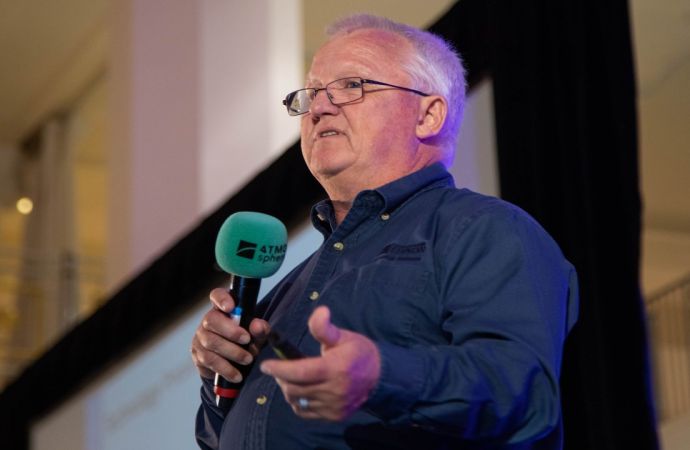With natural refrigerants being environmentally benign and proven to work in all applications, a new Greenpeace report warns about the environmental stakes posed by continuing the use of HFCs and calls for an HFC phase-out by 2020 as well as for incentives for developing countries to leapfrog HFCs. The document praises ammonia’s unique properties thanks to which the popularity of the refrigerant has continued despite the advent of F-gases.

Leading international environmental group Greenpeace has issued a report to the attention of policy makers, the industry and the wider public, warning them about the environmental stakes posed by continuing the use of HFCs, including HFOs that “are actually just HFCs marketed under a different name to avoid the negative connotations of HFCs”. The environmental group denounces the role chemical companies have so far played in contributing first to ozone depletion and later to global warming. Characterising containment “a shameful legacy”, the “HFCs: A growing threat to the climate” report demands an HFC phase-out by 2020 and urges for policy and financial incentives to allow developing countries to move directly to future-proof natural refrigerant solutions.
On the positive side, the report praises natural refrigerants, including ammonia as “tried-and-tested environmentally safer technologies available to meet today’s needs” and therefore calls on governments and corporations in industrialised countries to rapidly phase out HFCs and developing countries to seize the opportunity to leapfrog HFCs.
F-gases were responsible for 17% of climate change impacts by 2005
F-gases including CFCs, HCFCs and HFCs, contributed to 17% of net human-induced radiative forcing in 2005. Radiative forcing the most direct measure of climate change as it measures how much extra heat a greenhouse gas puts on every square metre of the planet.
Greenpeace characterises containment “a shameful legacy”, as “industry itself says that 61% of the most popular HFC (HFC 134a) ever produced is already in the atmosphere. The fact that 97% of all CFCs - the very first generation of F-gases - ever produced in developed countries are in the atmosphere does not bode well for HFC containment”.
Chemical industry should pay the cost of eliminating F-gases
“The chemical industry has never taken any moral or financial responsibility for the damage it has wrought to the ozone and now the climate”. In line with the ‘polluter pays’ principle, a tenet of environmental law, which states that the party responsible for producing pollution should be responsible to pay for the damage done to the environment, Greenpeace believes that “governments should legally compel the chemical industry to contribute funds towards the cost of eliminating CFCs, HCFCs and HFCs”.
Ammonia’s popularity despite the advent of F-gases: a testament to its unique properties
The Greenpeace report praises the use of natural refrigerants in an array of applications, including industrial refrigeration, supermarkets, mobile air-conditioners, domestic refrigerators and vending machines and coolers. More specifically, for the case of industrial refrigeration, the document praises ammonia’s unique properties thanks to which the popularity of the refrigerant has continued despite the advent of F-gases: “Ammonia refrigeration systems cost on average 10-20% less to install than systems using competitive industrial refrigerants. Ammonia is 3-10% more energy efficient than HFCs; as a result ammonia systems use less electricity. Ammonia systems are used in a wide range of applications, from air-conditioning for the International Space Station to cooling the Vancouver 2010 Winter Olympics bobsleigh run”.
After providing an overview of natural refrigerants and the various applications they can be used, the document concludes: “It is clear that natural refrigerants make both environmental and financial sense, compared to HFCs”.
Greenpeace demands an HFC phase out by 2020 and incentives for natural refrigerants
Greenpeace is calling for a complete phase-out of HFCs by 2020 under a dual approach involving both the UNFCCC and the Montreal Protocol to play unique collaborative roles: the HFC phase out would be incorporated in the Copenhagen agreement, while the Montreal Protocol would limit the production and consumption of HFCs around the world.
With a rapidly increasing demand for cooling services in emerging economies, “the overriding imperative for the coming years is that developing countries have strong policy and financial incentives to leapfrog HFCs and move straight to natural refrigerant alternatives”. The environmental group maintains that the first step that will allow developing countries to leapfrog HFCs straight to natural refrigerants is for the Parties to the Montreal Protocol to mandate the Multilateral Fund to maximise the climate benefits of the accelerated HCFC phase-out by only funding HFC-free projects.
On the positive side, the report praises natural refrigerants, including ammonia as “tried-and-tested environmentally safer technologies available to meet today’s needs” and therefore calls on governments and corporations in industrialised countries to rapidly phase out HFCs and developing countries to seize the opportunity to leapfrog HFCs.
F-gases were responsible for 17% of climate change impacts by 2005
F-gases including CFCs, HCFCs and HFCs, contributed to 17% of net human-induced radiative forcing in 2005. Radiative forcing the most direct measure of climate change as it measures how much extra heat a greenhouse gas puts on every square metre of the planet.
Greenpeace characterises containment “a shameful legacy”, as “industry itself says that 61% of the most popular HFC (HFC 134a) ever produced is already in the atmosphere. The fact that 97% of all CFCs - the very first generation of F-gases - ever produced in developed countries are in the atmosphere does not bode well for HFC containment”.
Chemical industry should pay the cost of eliminating F-gases
“The chemical industry has never taken any moral or financial responsibility for the damage it has wrought to the ozone and now the climate”. In line with the ‘polluter pays’ principle, a tenet of environmental law, which states that the party responsible for producing pollution should be responsible to pay for the damage done to the environment, Greenpeace believes that “governments should legally compel the chemical industry to contribute funds towards the cost of eliminating CFCs, HCFCs and HFCs”.
Ammonia’s popularity despite the advent of F-gases: a testament to its unique properties
The Greenpeace report praises the use of natural refrigerants in an array of applications, including industrial refrigeration, supermarkets, mobile air-conditioners, domestic refrigerators and vending machines and coolers. More specifically, for the case of industrial refrigeration, the document praises ammonia’s unique properties thanks to which the popularity of the refrigerant has continued despite the advent of F-gases: “Ammonia refrigeration systems cost on average 10-20% less to install than systems using competitive industrial refrigerants. Ammonia is 3-10% more energy efficient than HFCs; as a result ammonia systems use less electricity. Ammonia systems are used in a wide range of applications, from air-conditioning for the International Space Station to cooling the Vancouver 2010 Winter Olympics bobsleigh run”.
After providing an overview of natural refrigerants and the various applications they can be used, the document concludes: “It is clear that natural refrigerants make both environmental and financial sense, compared to HFCs”.
Greenpeace demands an HFC phase out by 2020 and incentives for natural refrigerants
Greenpeace is calling for a complete phase-out of HFCs by 2020 under a dual approach involving both the UNFCCC and the Montreal Protocol to play unique collaborative roles: the HFC phase out would be incorporated in the Copenhagen agreement, while the Montreal Protocol would limit the production and consumption of HFCs around the world.
With a rapidly increasing demand for cooling services in emerging economies, “the overriding imperative for the coming years is that developing countries have strong policy and financial incentives to leapfrog HFCs and move straight to natural refrigerant alternatives”. The environmental group maintains that the first step that will allow developing countries to leapfrog HFCs straight to natural refrigerants is for the Parties to the Montreal Protocol to mandate the Multilateral Fund to maximise the climate benefits of the accelerated HCFC phase-out by only funding HFC-free projects.
MORE INFORMATION
Related stories






